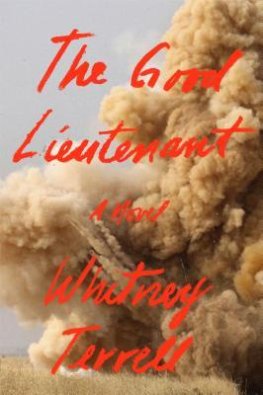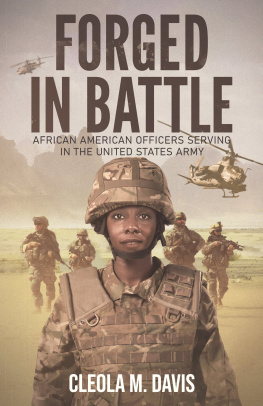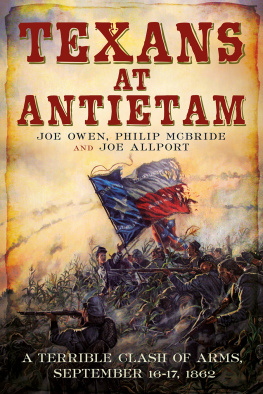Table of Contents
Guide
T his book could never have been written without three essential foundations: Bill Chapmans oral history, his letters to his wife, Beth, and painstaking research into the combat history of the 12th Infantry Regiment.
The whole Chapman family got into the act of recalling and recording my fathers war stories. Three generations contributed anecdotes, facts, and memoriesthe heart of the book. We shared what we remembered and jointly clarified details of things my father had said over the years. The family compiled over one hundred specific stories and verbal accounts that make this book a meaningful personal history. All deserve to be mentioned by name: my mother, Beth; my wife, Mary; my brothers, Dean and Brian and his wife, Nancy; and Bills grandchildren, Jennifer, Paul, Thomas, Daniel, Abigail, Rebecca, and Anne.
Special thanks go to my mother, who graciously turned over my fathers wartime letters. Due to censorship, these letters shed minimal light on the combat action, yet they yielded a treasure trove of insight into Bill Chapmans state of mindwhat I call the soul of this book. Instead of the composed, fatherly figure I knew growing up, I discovered a determined and adrenalin-addicted young man struggling to keep his emotions in check while dealing with the moral, psychological, and physical challenges of combat.
Others contributed firsthand information. Two surviving members of Bills battalion, Jack Port and Morgan Welch, shared their own personal stories to help build the narrative. Pat Gunning, the daughter of one of Bills closest friends, Lieutenant Jack Gunning, turned over the only photos we have of Bill during his combat tour and an unpublished account by one of Bills fellow officers in Normandy. Martin MacDiarmid III also provided information about his father, who is featured in the story.
The heavy work involved unearthing the movements and actions of Bills company, battalion, and regimentsomething necessary to place Bills war stories into the context of the fighting that swirled around him. Gerden Johnsons fine History of the Twelfth Infantry Regiment in World War II provided an excellent starting point, but I knew I had to drill down deeper to get the perspective of an infantry company officer. That meant searching the archives. I must tip my hat to the many dedicated and helpful historians and archivists who have preserved and cataloged the precious documents in our nations archives. Dr. Timothy Nenninger, Chief of the Textual Reference Staff, and his folks at the National Archives and Records Administration (NARA) in College Park, Maryland deserve recognition for the amazing work they do with the vast collection of modern military records. Coincidently, Tim and I had crossed paths in our younger days at the University of Wisconsin. The NARA staff, including those with the Cartographic Services and Still Pictures Branch, pointed me to the journals, maps, photos, reports, field orders, overlays, and casualty lists that enabled me to track the precise movements of Bills battalion. Lori Miller of Redbird Research assisted by locating and copying morning reports in the Personnel Archives at NARAs St. Louis facility.
Another archive worthy of mention is the World War II Topographic Map Series held by McMasters University in Hamilton, Ontario. The university has made available digital copies of the U.S. Armys maps on their website. Historians can see the terrain as the soldiers saw it in 194445. Without these contemporary maps, the overlays in the archives would be useless. The university has kindly permitted me to reprint the maps to illustrate the tactical movements of my fathers battalion and company.
The Combined Arms Research Library at Fort Leavenworth, Kansas and Ray Merriam of Merriam Press provided contemporary government publications and manuals that explained the U.S. Armys organization and tactical doctrine of that era.
Finding the files in the archives is one thing, going through the documents for the relevant information is an even bigger task. Fortunately, I had help. My wife and my two sons, Paul and Tom, made trips with me to College Park to comb through boxes of documents. We even discovered a five-page deposition made by my father about the campaign in southern Germany. No one in the family knew the deposition existed until we fished it out of the 4th Infantry Divisions archive. It is one of the few accounts written by my father about the war and, by far, the most extensive.
With research in hand, I launched into writing my fathers wartime experiences. I have to thank my literary friends, Skip Dyer, Ilia Davidovich, Paul Crockett, and Tom Burns, who helped me mold my initial manuscript into presentable form through their helpful critiques. My editor, Scott Belliveau, worked tirelessly to help my fathers story emerge from a fact-laden manuscript. The editorial staff at Regnery History, especially Alex Novak, Maria Bonvissuto, and Joshua Taggert, earned my thanks for pulling together the narrative, photos, and maps to make this book a complete package. Also, I need to recognize Greg Johnson, for showing faith in this project and assisting me in bringing my fathers wartime journey to the reading public.
This war biography fulfills a long-held dream and filial obligation by preserving, in print, the oral history of a soldier. My thanks to everyone who pitched in to make this book a reality.
Oral History of William P. Chapman
Correspondence:
William P. Chapman to Mrs. William P. Chapman, 19435.
Family Documents:
Separation Qualification Record, WD AGO Form 100. Chapman, William P. 12 Dec 45.
Military Record and Report of Separation Certificate of Service, WD AFO Form 5398. Chapman, William P. 12 Dec 45.
Remembrances of D-DayJune 6, 1944, William P. Chapman, May 30, 1994.
Silver Star Citation, handwritten transcription.
Government Documents:
70th Tank Battalion. After Action Reports, 1 Aug30 Nov 44, 131 Mar and 131 May 45. Combined Arms Research Library, Fort Leavenworth, Kansas.
70th Tank Battalion. Soixante-Dix, A History of the 70th Tank Battalion. Combined Arms Research Library, Fort Leavenworth, Kansas.
746th Tank Battalion. After Action Report 1 30 Jun 44. Combined Arms Research Library, Fort Leavenworth, Kansas.
Adair, L. R. Captain, U. S. Army, et al. The Battle of Mortain. Fort Leavenworth, KS: Combat Studies Institute, 1983.
Bailey, Claude E. Captain, U. S. Army. Operations of CompanyI8th Infantry (4th Infantry Division) East of Olzheim, Germany 28 February1 March 1945. Fort Benning, GA: General Subjects Section, Academic Department, The Infantry School, 1949.
Campbell, William R. Major, U. S. Army. Tanks with Infantry. Fort Knox, KY: Military Monograph, The Armored School, 1947.
Doubler, Michael D. Captain, U. S. Army. Busting the Bocage: American Combined Arms Operations in France, 6 June31 July 1944. Fort Leavenworth, KS: U. S, Army Command and General Staff College, 1988.
Folsom, Charles D. Captain, U. S. Army. Hedgerow Fighting Near Carentan. Fort Know, KY: Military Monograph, The Armored School, 1948.
German Order of Battle, Normandy13 June 1944. Fort Leavenworth, KS: Combined Arms Research Library.
Graduation Program, Twenty-Fifth Company, Second Student Training Regiment, Fort Benning, Georgia, June 1943. (Courtesy of Pat Gunning)
Miles, Otha G. Major, U. S. Army, et al. The Battle of Schnee Eifel. Fort Leavenworth, KS: Combat Studies Institute, 1984.
National Archives and Records Administration, College Park, Maryland. Office of the Adjutant General. Record Group 407: File 304-INF, records of the 4th Infantry Division, including File 304-INF(12), records of the 12th Infantry Regiment; File 330-INF, records of the 30th Infantry Division.
Next page







